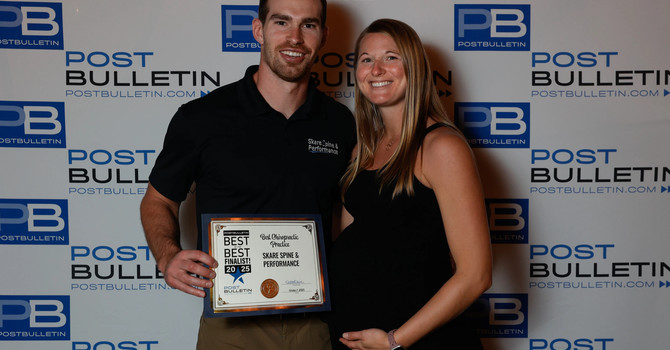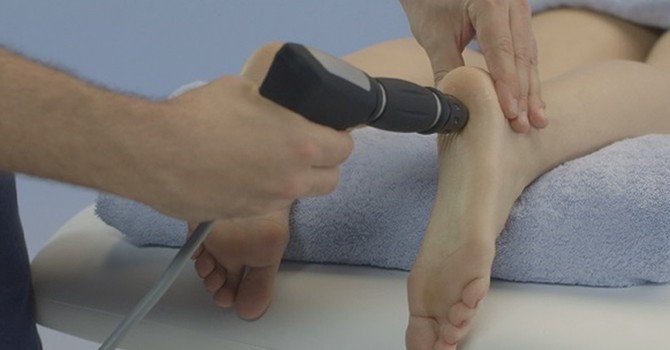
Wrist pain can be a frustrating barrier to daily activities, from typing at a desk to gardening to pushups or gripping a golf club. At Skare Spine and Performance in Rochester, MN, we understand how wrist pain can disrupt your life, and we’re here to help you find lasting relief. As a leading sports chiropractic and rehabilitation clinic, we combine chiropractic care, functional rehabilitation, dry needling, and soft-tissue therapies to address the root causes of wrist pain. Below, we answer commonly searched questions about wrist pain, including a dedicated section on carpal tunnel syndrome, and share our personalized approach to treatment, inspired by our commitment to helping you thrive.
What Causes Wrist Pain?
The wrist is a complex joint involving eight carpal bones, ligaments, tendons, and nerves, making it susceptible to various injuries and conditions. Because the wrist plays such a pivotal role in movement and daily activity, and has to handle both stability and flexibility, it’s highly susceptible to injury.
Common causes of wrist pain include:
- Overuse Injuries: Repetitive motions, such as typing, texting, or playing sports like tennis or golf, can lead to tendinopathy, including De Quervain’s tenosynovitis (pain on the thumb side of the wrist) or extensor tendon strains.
- Carpal Tunnel Syndrome: Compression of the median nerve in the wrist causes numbness, tingling, and pain in the thumb, index, and middle fingers, often worsened by repetitive tasks.
- Trauma: A fall on an outstretched hand can cause sprains, fractures (e.g., scaphoid fracture), or ligament injuries, leading to acute or chronic pain.
- Instability: Improper stabilization of the wrist, often due to weak forearm muscles or poor movement patterns, can cause conditions like lunotriquetral instability, resulting in pain or clicking.
- Nerve Entrapment: Compression of the ulnar nerve at the Guyon’s canal can cause tingling or weakness in the ring and pinky fingers.
- Arthritis: Osteoarthritis or rheumatoid arthritis can cause stiffness, swelling, and pain in the wrist, especially as we age.
- Referred Pain: Issues in the cervical spine or elbow, such as a pinched nerve or pronator teres tightness, can mimic wrist pain.
At Skare Spine and Performance, we begin with a 45-minute initial visit to assess your health history, perform a physical exam, and evaluate movement patterns. This thorough approach ensures we identify the true source of your wrist pain, whether it’s local or referred.
Why Does My Wrist Hurt When I Move It?
Pain with wrist movement often points to overuse injuries or joint dysfunction. For example, De Quervain’s tenosynovitis causes pain when twisting or gripping due to inflammation of the thumb-side tendons. Similarly, carpal tunnel syndrome can cause discomfort during wrist flexion or extension, especially at night. If you’ve had a fall, a scaphoid fracture or ligament sprain might cause pain with weight-bearing or rotation.
Poor stabilization, such as inadequate forearm muscle activation, can also stress the wrist, leading to pain during activities like lifting or typing. Our team uses techniques like Motion Palpation to assess joint mobility and Dynamic Neuromuscular Stabilization (DNS) to retrain proper movement patterns, addressing the root cause of your discomfort.
How Can I Tell If My Wrist Pain Is Serious?
While minor wrist pain may resolve on its own, certain symptoms suggest a need for professional care.
Seek help if you experience:
- Persistent pain lasting more than a few weeks
- Numbness, tingling, or weakness in the hand or fingers (possible carpal tunnel or ulnar nerve issues)
- Swelling, bruising, or deformity after a fall (potential fracture or sprain)
- Pain that worsens with activity or at night
- Clicking, catching, or instability in the wrist
Dr. Nate Skare, with over 700 hours of training in techniques like DNS, McKenzie Method, and dry needling, conducts a detailed exam to determine the severity of your condition. If imaging (e.g., X-ray or MRI) is needed, we guide you through the process to ensure an accurate diagnosis.
What Is Carpal Tunnel Syndrome and How Do We Treat It?
Carpal tunnel syndrome (CTS) is one of the most common causes of wrist pain, affecting millions of people, particularly those with repetitive hand tasks like typing or manual labor. It occurs when the median nerve, which runs through a narrow passage in the wrist called the carpal tunnel, becomes compressed.
This leads to symptoms such as:
- Numbness or tingling in the thumb, index, and middle fingers
- Pain or burning in the wrist or hand, often worse at night
- Weakness or difficulty gripping objects
- A sensation of swelling in the fingers, even without visible swelling
CTS can be caused by repetitive wrist movements, poor ergonomics, pregnancy, diabetes, or anatomical factors like a naturally narrow carpal tunnel.
At Skare Spine and Performance, we take a comprehensive approach to treating CTS, focusing on relieving nerve compression and restoring function without surgery.
Our treatment includes a combination of:
- Chiropractic Adjustments: We adjust the carpal bones and wrist to improve joint mobility and reduce pressure on the median nerve. Cervical spine adjustments may also help if nerve irritation originates from the neck.
- Neurodynamics: Neurodynamics is a specialized nerve treatment that is highly effective for carpal tunnel syndrome. It involves identifying where any nerve entrapment is and provides easy exercises to help mobilize and loosen restricted or entrapped nerves.
- Dry Needling: We target trigger points in the forearm and hand muscles to release tension and improve blood flow, which can alleviate nerve compression.
- Soft-Tissue Therapies: Myofascial release and muscle release techniques address tightness in the flexor retinaculum and forearm muscles, creating more space in the carpal tunnel.
- Shockwave Therapy: Shockwave therapy can help relieve carpal tunnel symptoms by stimulating blood flow, breaking up scar tissue, and reducing inflammation around the median nerve. It promotes tissue regeneration and healing without the need for injections or surgery. This non-invasive approach can significantly decrease pain and improve hand function over time.
- Dynamic Neuromuscular Stabilization (DNS): DNS exercises retrain proper wrist and forearm stabilization, reducing strain on the median nerve during daily activities.
- Ergonomic and Lifestyle Advice: We provide guidance on workstation setup, wrist-neutral positioning, and stretches to prevent symptom flare-ups.
- Functional Rehabilitation: Specific exercises, such as nerve gliding techniques, help mobilize the median nerve and improve hand function.
Our goal is to relieve symptoms quickly while addressing the underlying causes of CTS, empowering you to maintain long-term relief.
What Are the Best Treatments for Wrist Pain?
At Skare Spine and Performance, we believe in personalized, evidence-based care to avoid surgery or medication whenever possible.
Our comprehensive treatment plans, typically spanning 6-8 visits over 3-4 weeks, include:
- Chiropractic Adjustments: Using Motion Palpation and Diversified adjusting, we restore mobility to the wrist, elbow, and cervical spine. For example, adjusting the carpal bones can relieve pressure in carpal tunnel syndrome, while cervical adjustments may address referred pain.
- Dynamic Neuromuscular Stabilization (DNS): DNS retrains your nervous system to stabilize the wrist and forearm properly, reducing strain on tendons and ligaments. This is especially effective for overuse injuries or post-injury rehabilitation.
- Dry Needling: We target trigger points—tight, irritable muscle bands—in the forearm or wrist to reduce pain, improve blood flow, and restore function. Dry needling is highly effective for conditions like De Quervain’s, extensor tendinopathy, or CTS.
- Shockwave Therapy: Shockwave therapy uses acoustic sound waves to help break up scar tissue. Calcifications, or adhesions. Doing so generates a healing response by increasing blood flow, activating stem cells, and promoting other healing factors. It has been shown to be effective for carpal tunnel.
- Soft-Tissue Therapies: Myofascial release, cupping, and muscle release techniques address muscle tension and scar tissue, promoting healing and flexibility.
- Functional Rehabilitation: We prescribe exercises, such as eccentric strengthening for tendons or DNS-based drills, to rebuild resiliency and prevent re-injury. For example, a patient with tennis elbow might receive forearm exercises to support wrist stability.
- Patient Education: We provide lifestyle advice, such as ergonomic adjustments for desk workers or grip modifications for athletes, to maintain progress and prevent flare-ups.
Our holistic approach ensures rapid relief—most patients feel improvement within the first few visits—while equipping you with tools for long-term health.
Can Wrist Pain Be Prevented?
Prevention is key to keeping your wrists healthy, especially for athletes, desk workers, or those with repetitive tasks.
At Skare Spine and Performance, we recommend:
- Strengthening and Stabilization: DNS exercises strengthen forearm and core muscles to support the wrist, reducing the risk of overuse injuries like CTS.
- Proper Technique: We teach athletes and workers how to grip, lift, or move efficiently to minimize wrist strain.
- Ergonomic Adjustments: Simple changes, like using a wrist-neutral keyboard or adjusting your workspace, can prevent conditions like carpal tunnel syndrome.
- Periodic Maintenance: Many patients opt for wellness care after treatment to maintain joint mobility and muscle balance.
Our proactive approach helps you stay pain-free and perform at your best, whether you’re a weekend warrior or a busy professional.
Why Choose Skare Spine and Performance for Wrist Pain?
Skare Spine and Performance stands out as Rochester’s only clinic combining chiropractic adjustments, DNS, McKenzie Method, soft-tissue therapies, and dry needling for a truly holistic healing experience. Dr. Nate Skare’s extensive training and patient-centered philosophy ensure that your treatment is tailored to your unique needs and goals. We don’t just treat pain—we empower you with knowledge and exercises to take control of your recovery. Our goal is to get you back to the activities you love, whether it’s typing without discomfort, swinging a golf club, or lifting weights with confidence.
Take Control of Your Wrist Pain Today
Wrist pain, including carpal tunnel syndrome, doesn’t have to limit your life. At Skare Spine and Performance, we’re dedicated to helping you overcome pain and achieve optimal performance through personalized, evidence-based care. Don’t let discomfort hold you back — schedule your appointment today!

Nate Skare
Contact Me


